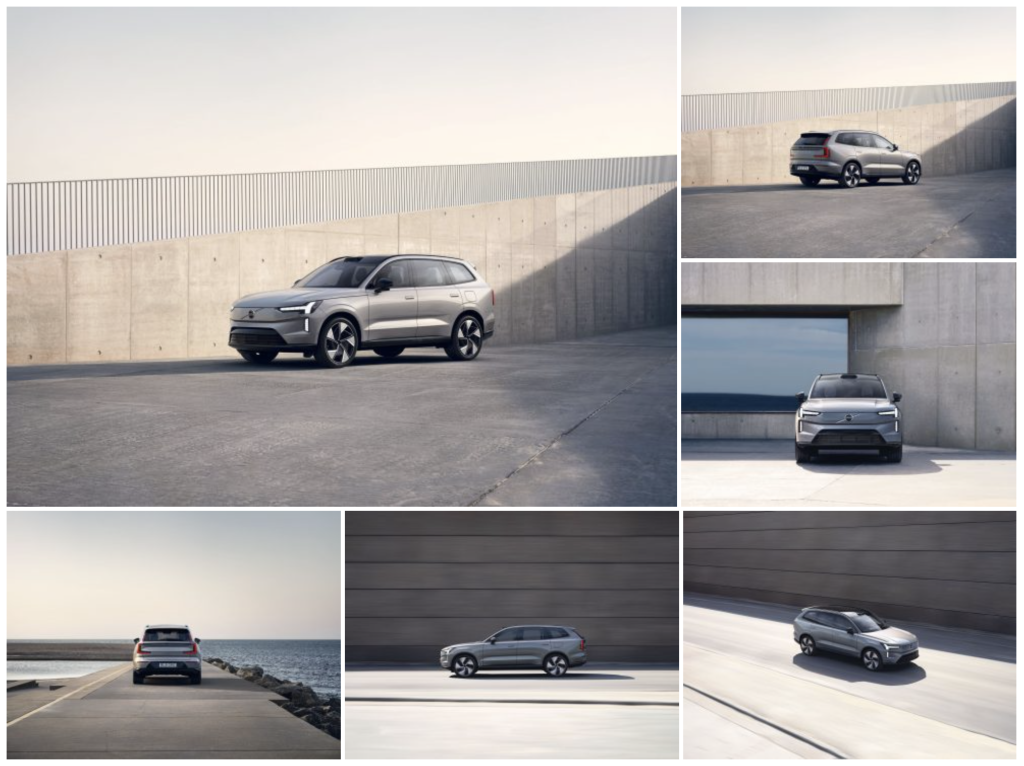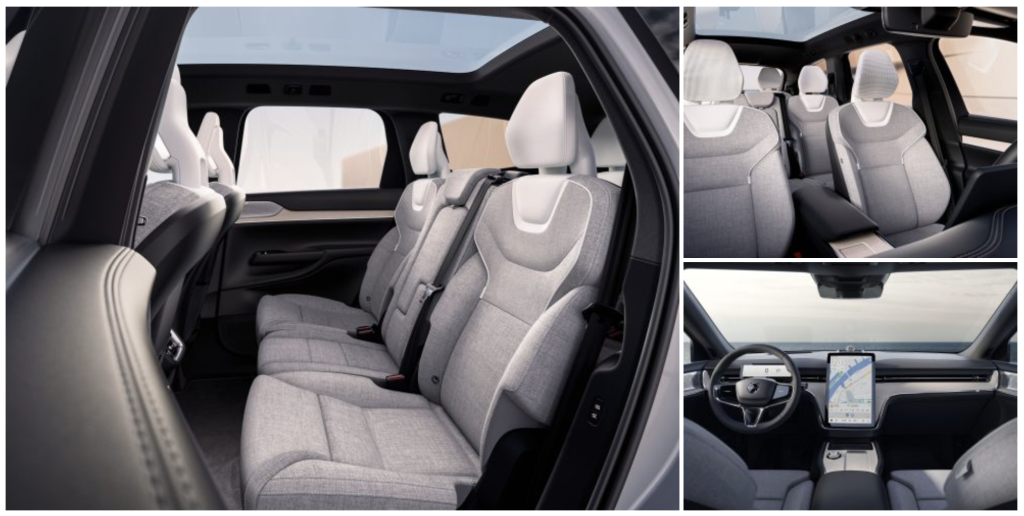Volvo has unveiled its next electric vehicle offering, a full-sized 7-seater SUV, the Volvo EX90.
Volvo had three clear focuses with their newest electric vehicle; internal capacity, safety, and sustainability. The Volvo EX90 seats 7, uses a suite of new safety features, and employs a laundry list of recycled materials throughout the vehicle. With success on these fronts and in a market with low competition (7-seater electric vehicles), Volvo might have created an enticing offering at just the right time.
Volvo has tricked out the new EX90 with all the performance that has become expected in large luxury SUVs. With a dual motor all-wheel-drive system supplying 496 horsepower and 671 pound-feet of torque, the Volvo EX90 gets out of its own way. On top of that, the massive full-sized SUV will still travel 300 miles on a single charge via an enormous 111kWh battery. However, with that colossal battery, the SUV lags behind competitors such as Hyundai/Kia and Tesla in terms of charging, taking 30 minutes to charge from 10-80%.

The Swedish brand has maintained its elegant yet conservative Scandinavian design language with the EX90. In fact, besides its smoother exterior body panels, funny door handles, and smoothed-over front grill, the Volvo EX90 shares a lot of design elements with its gas counterpart, the XC90.
Moving to the interior is another story. Volvo has radically redesigned its interiors, beginning with user controls. Most interior controls have been centralized in the portrait center screen. Simultaneously, the rest of the interior panels have acquired a more muted design language overall.

While the Tesla-esque center display system may win some consumers, it is unclear how usable the U/I is. Hopefully, a positive indication is that the brand has worked with Google on the car’s software, perhaps indicating a U/I experience similar to android auto. However, there will undoubtedly be detractors of the all-digital experience, lacking physical controls that some believe are superior.
The tech upgrades aren’t limited to U/I changes; Volvo proudly states that the “EX90 is the first Volvo that’s hardware-ready for unsupervised driving in the future.” This is possible through cameras, radar units, and lidar placed around the vehicle. However, at the time of launch, it is unclear what level of autonomous driving the SUV will come with at launch.
While each of these features is undoubtedly incentive enough for those looking to buy a luxury 7-seater EV, perhaps the price is the most interesting part of Volvo’s equation. Volvo is offering a “well-optioned” EX90 for under $80,000, placing the vehicle below the Tesla Model X and Mercedes EQS SUV in price but above the Cadillac Lyriq.
Volvo will likely benefit from its early entrance as the electric full-size SUV market continues to heat up. But it will need to continue software improvements if they hope to stay ahead of the competition and attempt to catch up with Tesla.





